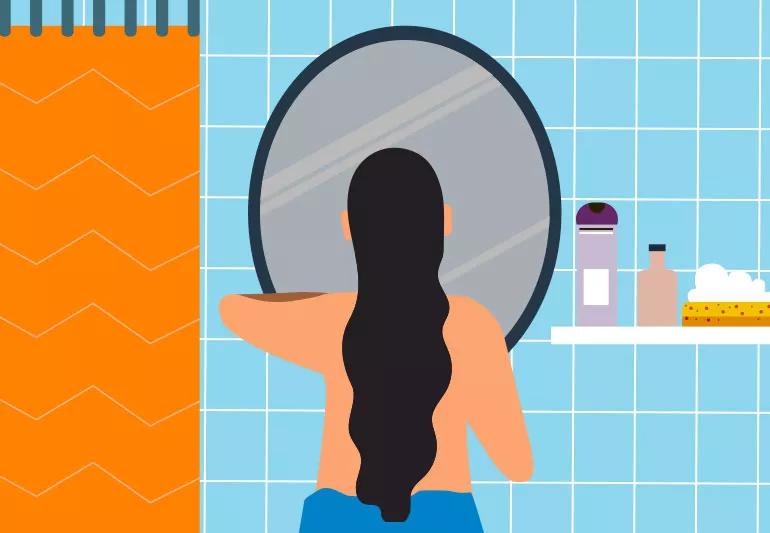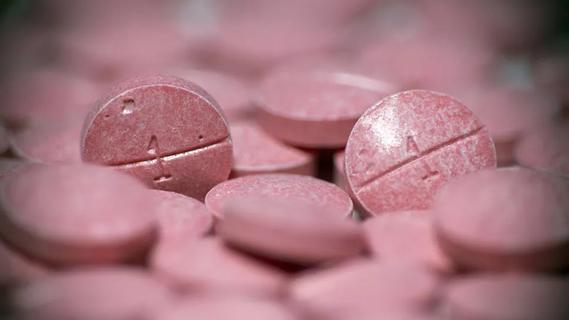Tips for a more effective self-exam

While most women know they should be familiar with changes in their breast tissue that could be an early sign of breast cancer, many are afraid that they will “do it wrong” and avoid self-exams all together.
Advertisement
Cleveland Clinic is a non-profit academic medical center. Advertising on our site helps support our mission. We do not endorse non-Cleveland Clinic products or services. Policy
Sound familiar? Holly Pederson, MD, breast health specialist and Director of Medical Breast Services, shares some useful tips about when and how to do a breast exam and what to look for.
If you get menstrual periods, perform the exam the week afterward. “This is when the breast tissue is the least lumpy,” Dr. Pederson says. If you don’t get periods, pick a day each month and stick to it.
Setting a monthly reminder in your phone can also be a useful tool. Many women examine their breasts more often than once a month, but doing so can be like watching a small child grow — if you see them every day, you are less likely to notice their growth than if you see them less frequently. If you’re checking your breasts too often, you may miss subtle changes.
You should also see your physician for a clinical breast exam at least every three years starting at age 20, and annually after age 40.
Stand in front of a mirror and note the size and shape of your breasts. It’s common for one to be larger or smaller than the other, Dr. Pederson notes.
“Note any nipple changes — though nipple inversion on one or both sides is common,” she says. “If you see new changes in the size or shape of one breast or in a nipple, report them to your healthcare provider.”
Advertisement
Next, lift your arms above your head. Note any dimples or lumps. Cancers can tug at the skin, nipples and muscles. If you notice anything different or asymmetric (on only one side), see your doctor.
Now, lie on your back and lift one arm above your head. “Lying down flattens and thins out your breast tissue, allowing for easier examination,” Dr. Pederson explains.
Reach your other hand across your chest and use the fat pads of your index and middle fingers (the part of the finger you use to type on a keyboard) to gently press your breast tissue against your rib cage. “You want to use enough pressure to check all of the tissue between your skin and your ribs, but obviously not so much that it is painful,” she says.
Now, gently slide your fingers in circles, either from the outer breast to the nipple, from the nipple outward, or up and down across your chest. Dr. Pederson says there is no “right way” as long as you cover the area up to your collarbone, across to your sternum or breast bone, and then laterally up into your armpit.
“You’re looking for a hard lump that is the consistency of a frozen vegetable, like a pea or lima bean,” she explains. “Lumpy areas are very common — try to become accustomed to what is normal for you.”
It’s also very common to feel a thickening at the bottom part of the breast (where an underwire would sit on a bra), which is usually normal. But when in doubt, have your doctor double-check. Finally, give your nipple a gentle squeeze.
Report any changes in the breast, skin or nipple, including nipple discharge, to your doctor. It is also important to report persistent pain in one area of the breast, as this can, rarely, be a sign of breast cancer.
Part of self-breast awareness is knowing your family history and making sure that your doctor knows of any updates to it. Cancers that occur early (under the age of 50), and rare cancers such as ovarian cancer or pancreatic cancer, are particularly important to report. Red flags may prompt referral to a genetic counselor.
Advertisement
Learn more about our editorial process.
Advertisement

Bleeding is a risk and warrants taking care, but the reward of this lifesaving medication is great

Severe and debilitating headaches can affect the quality of your child’s life

With repeat injections over time, you may be able to slow the development of new wrinkles

Although it can be alarming, it’s normal to experience blood clots during menstruation

Stretch before heading outside, keep proper form and avoid jerking or twisting to throw snow

Type 2 diabetes isn’t inevitable with these dietary changes

Applying a hot or cold compress can help with pain